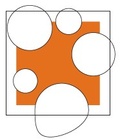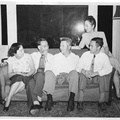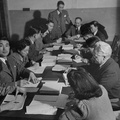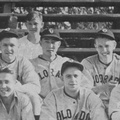Japanese and Japanese American students attended the University of Colorado in very small numbers in the 40 years before World War II. By the late 1930s Japanese American students were attending at an average of 20 students per semester out of a total student population of just under 4,000. As such a small portion of the overall student body, one might anticipate that Japanese Americans would have been an invisible minority; but that would be far from the case. Japanese American students were influential far beyond their numbers. Among that tiny percentage of students and faculty would be honors students, student activists, varsity athletes, club and society members, members of honorary societies and honored sensei. They also became involved in the first civil rights movement at the University of Colorado, and as instructors at the University of Colorado-based U.S. Navy Japanese Language School, contributed substantially to World War II in the Pacific.
During the war, Japanese American enrollment rose four-fold, but either due to prevalent anti-Japanese sentiment, the militarized campus, or a desire to evade possible confrontation, wartime Japanese American students withdrew from the campus activities in which previous peacetime classes of Japanese Americans had participated. However, no matter how much the larger number of Japanese Americans attempted to stay hidden during the war, their presence could not go unnoticed. Both rising enrollment and the establishment of the U.S. Navy’s language school on campus embroiled the university and its Japanese American students and sensei in the tangled wartime politics of FBI and U.S. Army security clearances, community required enrollment caps, and the potential of off-campus backlash. Invisibility, whether unwelcome or preferred, was not to be an attribute of Japanese Americans at the University of Colorado.1
Those who were not white, Anglo, and Protestant were commonly considered of different "nationality" despite U.S. citizenship or American birth. Although little evidence remains to show whether or not the university kept track of the ethnicity of its students, Colorado city directories for Denver, Colorado Springs, Leadville, and Pueblo placed a parenthetical “colored” after all black entries.
Coal miners working for Boulder County's Rocky Mountain Fuel Company in the 1920s were questioned by company officers who filled out insurance forms. Hispanic and Asian miners, of U.S. citizenship, were registered as being of Mexican, Japanese, or Chinese "nationality." While one might argue that the term nationality might have been the word for ethnicity prior to the 1950s, U.S. citizens and foreign nationals of similar ethnicity were often lumped together. Concurrently, U.S. citizens of all types were rarely grouped together as distinct from immigrants or foreign nationals. Interestingly, blacks, multi-generational citizens for the most part, were often lumped with immigrants, foreign nationals, and other non-whites. Citizenship, though important, seemed to matter less than color.2
International students attended and graduated from CU from the Philippines, China, Japan, India, and other countries. Although students and faculty were proponents of the "Americanization" of immigrants, student editorials seem to have been sympathetic toward the plight of immigrant labor and cognizant of the contributions of immigrant culture.
Foreign students attended the university in increasing numbers after World War I. In 1921, a Silver and Gold editorial surmised that foreign students should have little trouble finding lodging in rooming houses on "The Hill," a popular business and rental district immediately west of campus, a supposition belied by the necessity for "international houses" for foreign and non-white students 20 years later. There seems to have been considerable interest in foreign and immigrant students on campus. The Cosmopolitan Club, the international and immigrant club established in 1922, was compelled to keep its "American" membership below 40 percent. A waiting list was apparently long. But if interest in foreign culture ran high among native born American students, immigrants and ethnics were keenly aware of their foreignness. The Cosmopolitan Club and various guest speakers spoke on the need for "Americanization" and a "Melting Pot."3
Colorado became the eastern most terminus of early Japanese immigration between 1890 and 1924, which began in the first decade of the 20th century. One major Japanese immigrant community developed in the northeastern Colorado towns of Brighton, Lupton, and Platteville, as migrant Japanese, or Issei, farmers faced no prohibition on the owning or leasing of land. The University hosted Japanese American students in very small numbers after 1900. The first Japanese graduates were from Japan, receiving degrees in medicine, Sosuke Ochiai in 1911 and Kenje D. Minato in 1912. The first identifiable Japanese American alumnus was Yoshio Tashima of Brighton, Colorado, who graduated with a B.S. in Electrical Engineering in 1917.4
Japanese American attendance at the University of Colorado rose from less than a half dozen in the late teens and twenties to 16 in the late 1930s enrolled during the fall and spring semesters. Yearbooks showed that those pictured were active in campus publications, societies, honoraries, clubs, and sports.5 Both Japanese and Japanese American students were well represented on the membership rolls of the Cosmopolitan Club, often in official capacities during the 1920s and 1930s. The club held functions on Japanese cultural themes and presentations frequently. Ironically, and perhaps purposefully, the Cosmopolitan Club held presentations on Japanese and Hawaiian culture soon after the attack on Pearl Harbor.6
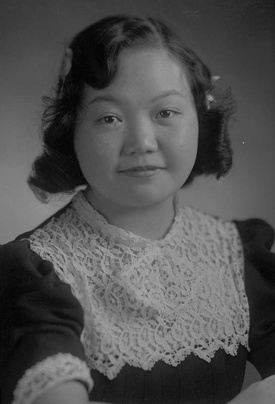
Ruth Chiyeko Inabu (1941) Charles, Snow Collection, 23664 [two images per negative], Archives, University of Colorado Boulder Libraries.
One stand-out student, Ruth Inabu, picked up where fellow Japanese Americans in the Cosmopolitan Club left off. Facing the Sino-Japanese War, the Anschluss, the Czech partition, the beginning of World War II, and the Russo-Finnish War, between 1938 and 1940, she became a peace and civil rights activist. She received the appointment as Cosmo Club representative to the Campus Peace Council in the spring of 1938 while debating on peace topics on the Forensics team. While on the Peace Council and Forensics she met several students who would later become partners in her civil rights efforts. In 1939, she took first prize in the Klinger Oratorical Contest and became the president of the Campus Peace Council, remaining as the Cosmo Club representative. She organized the spring 1940 Peace Convocation and gave a speech promoting the youth voice on matters of peace. Since youth would end up doing the fighting, she believed that their voices for peace ought to be heard. At the same time she began working through the Cosmopolitan Club for civil rights for Japanese Americans.7
The Cosmopolitan Club and the American Student Union (ASU) had both established anti-discrimination committees by 1938. On February 16, 1938, a joint session on racial and ethnic discrimination, chaired by Ruth Inabu, met to hear presentations by Professor Bernard, and three black speakers from Denver. Bernard spoke on anti-Oriental discrimination. Harold Brown, a statistician from a Black fraternal order in Denver, John A. Waller, an African American in the Bureau of Land Reclamation, and Harry E. Polk, a black in the Social Security Administration, all spoke on contributions made by African American culture, various aspects of discrimination, and strategies for combating racism. Ruth Inabu asked the two clubs to work with the Japanese American Citizenship League to assist Japanese residents in gaining citizenship. More impressive than the speakers was the make-up of the audience. There were 20 blacks from Boulder and Denver; faculty, students, and members of the community; white liberals from the American Student Union and the Cosmo Club; Japanese Americans, and other nationalities and ethnicities, some 50 in all.
Most striking was what they did following the presentations. They broke into small groups and went to Hill establishments for sodas and refreshments as a demonstration against the unwritten Boulder color bar. It was the first time blacks and other ethnicities had been served in Hill restaurants in years. After meetings, Cosmo Club members had frequently gone “coking,” where they had probably become acquainted with Hill discrimination. During 1938, they would continue their after-meeting trips for sodas in a similar spirit. However, being able to be served en masse, or in small interracial groups, when accompanied by whites, was not the same as equal treatment. But if discriminatory practices remained unaffected, students were, and they began to mobilize against the policies of racial bigotry.8
In November 1938, events in Germany would heighten on campus sensitivity to racism and anti-Semitism. As the Nazis intensified their persecution of Jews, the Boulder Daily Camera featured daily front page stories highlighting the ghettoization, brutalization, disenfranchisement, and systematic looting of the Jews in Germany. President Norlin and 12 professors signed a telegram to President Roosevelt condemning the persecution in late November, followed two weeks later by a similar protest by the C.U. Law faculty.
The significance of the international situation had not been lost on the students, either. The Cosmopolitan Club divided into five groups to study international and domestic political and social problems. At the same time, the American Student Union, led by Clinton E. Jencks, condemned German persecution of Jews and requested a trade embargo. In discussions on the Nazi campaign of terror against the Jews in Germany, ASU members agreed that they could not fully denounce Germany "without first looking into a somewhat similar situation here." Jencks summarized the color bar on the Hill to the Silver & Gold and stated that "a great number of white people resent this discrimination, but do not say anything about it." The ASU planned to survey large numbers of students and Boulder residents to verify their belief that segregation was not supported by the University or the community. Jencks and other members firmly believed that nothing would be done about the situation without agitation.
A small committee from the ASU, led by white senior Donald E. Boothroyd, then approached Professor Carl Eckhardt, Chair of the History Department, with their plan. Since particular minority groups were being discriminated against by Boulder merchants and were not served at local restaurants and cafes and were unwelcome at other shops, the ASU wanted to poll the student body during the next registration on whether or not they supported such segregation. If the student body was against the color bar, the group's intention would be to attempt to convince the merchants to accord equal treatment to all students. The liberal students believed a poll demonstrating campus wide support for desegregation might be an effective tool with which to convince the merchants to drop their color bar.
Notes:
1. For a general treatment of Japanese Americans in Colorado, see Bill Hosokawa, Colorado’s Japanese Americans: from 1886 to the Present, (Boulder, CO: University Press of Colorado, 2005); for a general history of the University of Colorado for this period, see William E. Davis, Glory Colorado: a History of the University of Colorado, 1858-1963 (Boulder, Colo.: Pruett Press, 1965). For a description of the pre-WWII civil rights effort at the University of Colorado, see David M. Hays, “'A Quiet Campaign of Education': Equal Rights at the University of Colorado, 1930-1941,” in Arturo J. Aldama, Elisa Facio, Daryl Maeda, and Reiland Rabaka, eds. Enduring Legacies: Ethnic Histories and Cultures of Colorado, (Niwot, CO: University Press of Colorado, 2011), 159-74.
2. Polk's City Directories for Denver, Colorado Springs, Pueblo and Leadville carried the notation (col'd) for all Black entries into the first decade of the 20th century. Neither the Boulder nor Trinidad Directories seemed to employ that notation; Employer's Mutual Insurance Company - Compensation Information, 1920s, Rocky Mountain Fuel Company Papers, 7-1 through 7-13, Archives, University of Colorado Boulder Libraries (AUCBL); see following discussion of the Cosmopolitan Club; during this era, admissions forms contained bubbles for the indication of religion and color, but few of these forms remain, Omer Stewart Collection, Carnegie Library, Boulder Public Library, Boulder Colorado.
3. See University of Colorado Student Directories, 1877-1945, (Boulder, CO: Associated Students of the University of Colorado); on "Americanization" see editorials "Mining Towns of Boulder County," Silver & Gold, November 30, 1920, 2; "Americanization - A Crying Need," Silver & Gold, July 3, 1924, 2; on the Cosmopolitan Club, see Silver & Gold, November 14, 28, 1922, October 3, 1936, February 16, 1937; on the welcoming climate of Boulder and C.U., see "Foreign Students to Attend University," Silver & Gold, August 5, 1921, and "Chinese Students Praise University," Silver & Gold, June 30, 1922; for ethnics on `Americanization' see, "Red Fox Speaks on Americanizing Indian," Silver & Gold, August 4, 1922 and "Cosmo Club Will Sponsor `Melting Pot' Festival," Silver & Gold, February 16, 1937.
4. First Japanese American graduates were culled from University of Colorado Alumni Directory, 1877-1921, (Boulder, CO: University of Colorado, 1921); Catalogues and Announcements of the University of Colorado, 1877-85, v.1, along with subsequent catalogues listed attending students; Ascertaining ethnicity from surnames is a common but imprecise method which fails to take into account mixed marriages or name changes. Researchers should consult the Federal Manuscript Census, which may not pick up university students, to correctly check the race, ethnicity, and religion of C.U. students and faculty prior to 1940.
5. Catalogues of the University of Colorado, 1917-1937, 1930s graduates included: Thomas K. Kobayashi of Denver, Pharmacy 1935, Phi Epsilon Phi, Alpha Epsilon Delta; Shimpei Sakaguchi of Brighton, Pharmacy 1938, Mortar & Pestle; John Yoshio Mori of Atwood, Engineeering 1938, A.I.Ch.E., Cosmopolitan Club; Susan Noguchi of Sterling, Arts & Sciences 1938, Delta Phi Delta, President, Mortar Board, Vice President, Cosmopolitan Club, President, Junior Boulder Artist Guild, House of Representatives, Barb Council, Coloradoan/Coloradan (Boulder, CO: Associated Students of the University of Colorado) Volumes 32- 40 (1930-1938). But not all graduates or attendees appeared in the individual portraits within the yearbook. Susan Noguchi was pictured in the Silver & Gold four times during the 1936/37 school year for her work in the Cosmopolitan Club and Delta Phi Delta.
6. Russell Endo, "Persistence of Ethnicity: the Japanese in Colorado," [c. 1978], Pamphlet File, AUCBL; Minute Book, 1937-1949, Cosmopolitan Club Collection, 1-bk 1, AUCBL.
7. “Approval Asked for All-Student Peace Assembly,” Silver & Gold, April 19, 1938, 1-2; “Women Use Prerogative: New Mexican Debaters Meet Inabu, Griffith Tomorrow,” Silver & Gold, May 3, 1938, 1; “Debating Team will Participate in Forensic Meet,” Silver & Gold, May 6, 1938, 1, [on cooperation for peace]; “CU Holds Power at Forensics Meet,” Silver & Gold, May 10, 1938, 1; “Roark is Peace Council Chairman,” Silver & Gold, May 27, 1938, 2; Inabu was elected to be Cosmo Club representative to the Peace Council, Silver & Gold, October 11, 1939, 3; “Inabu Takes First in Oratory,” Silver & Gold, April 7, 1939, 1; “Peace group to Broaden ’39 Program,” Silver & Gold, October 6, 1939, 1; “Peace Convocation Scheduled Friday Morning: Roark, Ellzey, Fischer, Smith and Inabu will address 11O’Clock Meeting in Macky,” Silver & Gold, April 16, 1940, 1, [pictured, “Ruth Inabu Arranges Peace Convocation”]; “Five Students Score War at Convocation,” Silver & Gold, April 19, 1940, 1.
8. "Negroes and White Students `Go Coking' Together at University Hill Restaurants to Break Down Reported Discrimination," Boulder Daily Camera, February 17, 1938, 1; the next day the A.S.U. attempted to demonstrate against the racism implicit in the call for an anti-Japanese boycott, see "Shivering C.U. Students See Anti-Japanese Meeting Turned into Farce After Lecture, Boulder Daily Camera, February 18, 1938, 1; Ruth Chiyeko Inabu (BA 1940), Treasurer of Delta Sigma Rho, Phi Gamma Mu, President of Women's Forensic Society, American Student Union, Secretary of the Cosmo Club, President of the Peace Council, Klinger Oration Winner, Delta Sigma Rho Extemporaneous Speech Winner, BA; Minute Book, 1937-1949, Cosmopolitan Club Collection, 1-bk 1, AUCBL.
© 2014 David M Hays


